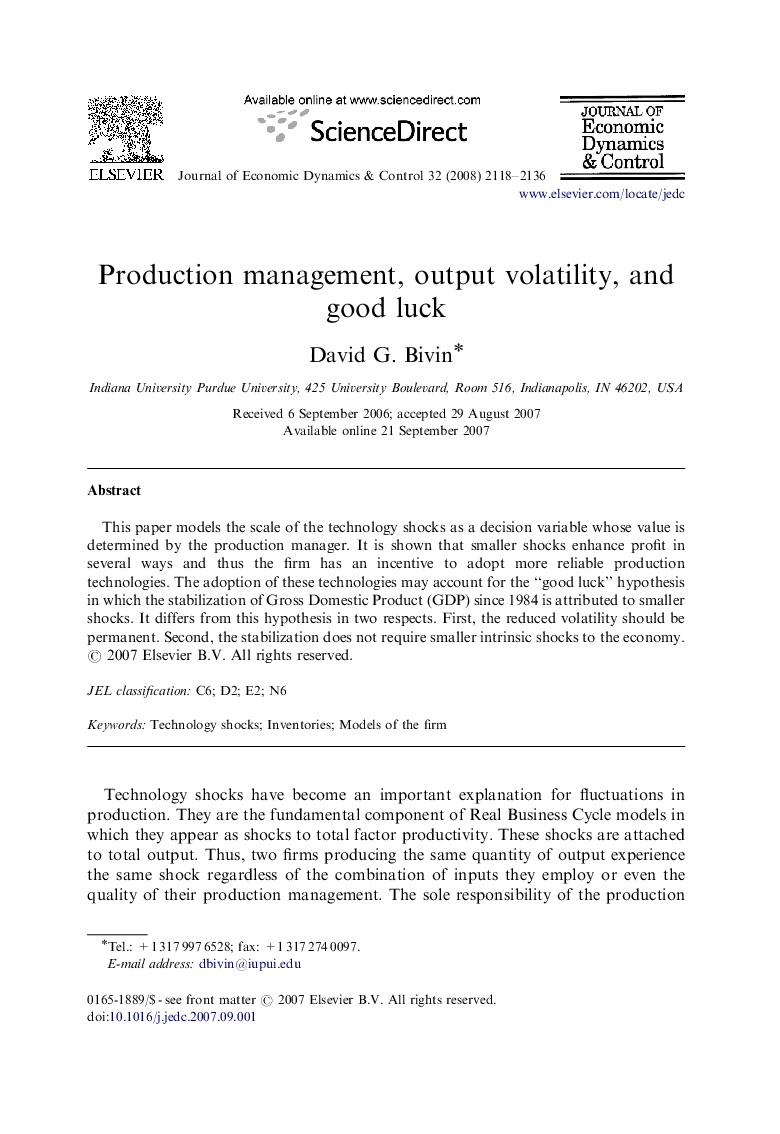| Article ID | Journal | Published Year | Pages | File Type |
|---|---|---|---|---|
| 5099396 | Journal of Economic Dynamics and Control | 2008 | 19 Pages |
Abstract
This paper models the scale of the technology shocks as a decision variable whose value is determined by the production manager. It is shown that smaller shocks enhance profit in several ways and thus the firm has an incentive to adopt more reliable production technologies. The adoption of these technologies may account for the “good luck” hypothesis in which the stabilization of Gross Domestic Product (GDP) since 1984 is attributed to smaller shocks. It differs from this hypothesis in two respects. First, the reduced volatility should be permanent. Second, the stabilization does not require smaller intrinsic shocks to the economy.
Keywords
Related Topics
Physical Sciences and Engineering
Mathematics
Control and Optimization
Authors
David G. Bivin,
